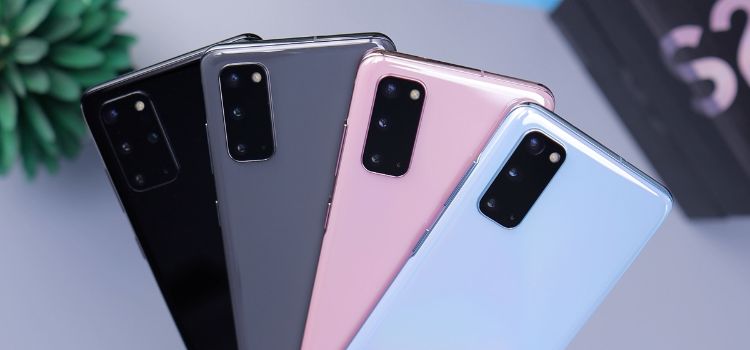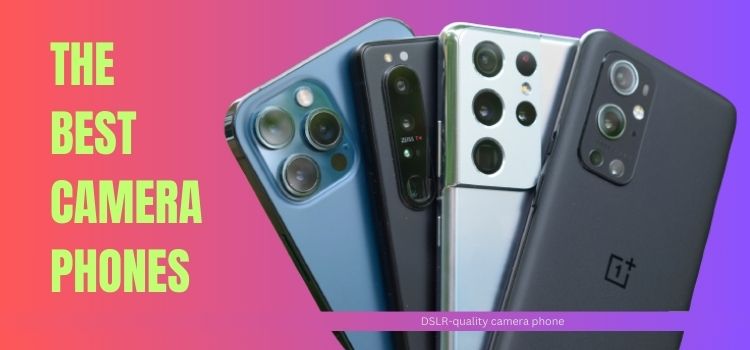As an Amazon Associate, I earn from qualifying purchases.
The best camera in a smartphone has emerged as the most important among countless aspects. So, the common question when buying a smartphone is: What smartphone has the best camera? Whether you’re an expert photographer, a beginner enthusiast, or anyone who loves to capture life’s precious moments, the excellence of the smartphone camera can significantly impact your daily life. This complete information delves deep into smartphone cameras, inspecting the key components: What Smart Phone Has The Best Camera? And discover some of the most pleasant smartphone cameras on the market. By the time you end reading, you can be geared up to make a knowledgeable desire when choosing a smartphone with a remarkable digital camera to meet your needs.
What is the Smart Phone Camera Technology?
Pursuing excellent smartphone camera science has become a significant issue in the decision-making process when purchasing a new phone. As science continues to evolve, smartphone cameras have reached incredible heights, offering capabilities that rival competing digital cameras. Understanding What Smart Phone Has The Best Camera Technology: It is essential to reflect on several important factors and consider the top competitors in the market.
1. Sensor Size and Pixel Count
The coronary heart of any digital camera system, including smartphone cameras, is its photo sensor. The sensor dimension performs a quintessential position in finding out the quantity of mild a digicam can capture, affecting photo quality, particularly in low-light conditions. Bigger sensors usually function higher in low light.
Smartphone sensors are a whole lot smaller than those discovered in committed cameras. However, they come in several sizes, commonly measured in inches. Larger sensors, like these determined in Google’s Pixel and some Samsung Galaxy models, tend to produce higher picture quality, particularly in tricky light situations. Additionally, pixel relies on matters; extra pixels can seize finer details, and smaller pixels can combat low light.
2. Aperture and Low-Light Performance
The camera’s aperture, measured in f-stops, determines how much light the lens can absorb. A lower f-stop number indicates a wider gap, allowing for more light and better low-light performance. Smartphone cameras with wider apertures, such as f/1.8 or more down, tend to excel in dimly lit environments.
3. Image Stabilization
Understanding What Smart Phone Has The Best Camera Technology. Optical and digital image stabilization technology prevents blurry photos and shaky videos. Visual image stabilization (OIS) uses physical mechanisms to compensate for handshakes, while digital image stabilization (DIS or EIS) relies on software algorithms to achieve the same effect. Many high-end smartphones now combine both OIS and EIS for superior stabilization.
4. Zoom Capabilities
Zoom functionality varies amongst smartphones. Some provide optical zoom, permitting you to get nearer to your problem, barring dropping quality. In contrast, others matter on digital zoom, which vegetation and enlarges the image, regularly lowering the rate. The telephoto lens is a general characteristic of optical zoom.
5. Computational Photography
Computational photography, powered via superior software programs and synthetic intelligence, has revolutionized smartphone photography. Features like computational HDR, nighttime mode, and AI scene awareness beautify photos excellently and make images more reachable to customers with various talent levels.
Top 10 best Smart Phone camera

Now that we have explored the critical technical aspects of smartphone cameras let’s explore the ten best smartphone cameras among the world’s top 10 best camera phones, known as the best megapixel camera phones.
1. Apple iPhone
Apple’s iPhones have persistently delivered tremendous digital camera performance. Recent fashions regularly characteristic sensor technology, picture processing, and computational images that have accelerated it to the pinnacle of the smartphone camera ranking, recognized as a DSLR-quality camera phone. The iPhone’s Digicam app is acknowledged for its straightforward interface and points like Portrait Mode, Smart HDR, and Deep Fusion. You can visit Apple iPhone for more details.
2. Google Pixel
Google’s Pixel Sequence, the best budget camera phone, is famous for its excellent digicam, especially in the software program department. Google’s best megapixel camera phone emphasizes computational image, resulting in stunning photos, even from a single lens. Night Sight Mode is a standout function for low-light photography, and Super Res Zoom offers exceptional digital zoom quality.
3. Samsung Galaxy
Samsung’s Galaxy smartphones have made giant advances in camera technology. Models like the Galaxy S21 Ultra offer versatile camera systems with multiple lenses, including a periscope telephoto lens for impressive zoom capabilities. Samsung’s DSLR-quality camera phone software provides a range of shooting modes and pro controls.
4. Huawei P Series
Huawei’s P Series, particularly the P40 and P50, boasts staggering digicam technology, including giant sensors and Leica-branded lenses. These telephones excel in low light, provide effective zoom options, and have versatile picture modes. However, availability can also vary depending on your area due to software program concerns.
5. OnePlus
OnePlus smartphones are known for their clean and close-to-stock Android experience, but they have improved their camera systems significantly. Models like the OnePlus 9 Pro feature Hasselblad collaboration, enhancing colour accuracy and offering Pro shooting modes.
6. Xiaomi Mi Series
Xiaomi’s Mi collection is regarded for supplying exceptional digicam setups at aggressive prices. The Mi Eleven Ultra, for instance, facets an extensive digital camera bump housing a primary, ultra-wide, and periscope telephoto lens. Xiaomi’s Camera app presents a variety of innovative capturing modes.
7. Sony Xperia
Sony Xperia smartphones leverage the company’s know-how in digital camera sensor manufacturing. They frequently feature magnificent sensors and software program enhancements for pictures and videography. The Xperia 1 III, for example, boasts a 4K OLED show calibrated for expert colour accuracy.
8. Oppo Find Series
Oppo’s Find collection focuses on innovation; their digital technological know-how is no exception. Models like the Oppo Find X3 Pro have superior colour tuning and seize capabilities. The Find X3 Pro’s microscope lens is unique, permitting excessive close-up shots.
9. Vivo X Series
Vivo’s X sequence smartphones are recognized for their smooth format and successful cameras. The Vivo
X60 Pro, with its gimbal stabilization system, stands out for its video recording capabilities. It excels in taking pictures quickly and with constant footage.
10. ASUS Zenfone
ASUS Zenfone smartphones cater to image lovers with elements like guide controls, RAW capture, and Pro Mode. The Zenfone eight Flip, with its particular flip-up digicam module, presents a full-screen trip barring notches or punch holes.
The Role of Software and AI
In the ever-evolving world of smartphone cameras, hardware is solely a section of the equation. Software and synthetic talent (AI) are quintessential in bettering the picture experience. Here are some necessary components to consider:
1. Image Processing Algorithms
Each smartphone producer employs picture processing algorithms affecting color reproduction, sharpness, and dynamic range. Some prioritize vivid colors, while others decide on more excellent herbal tones.
2. Night Mode
Night mode is a game-changer for low-light photography. It combines more than one exposure to limit noise and decorate elements in darkish scenes. The effectiveness of nighttime mode can range between devices, with some presenting higher outcomes than others.
3. Portrait Mode
Portrait mode, additionally recognized as bokeh mode, uses a software program to create a blurred heritage (bokeh) effect, simulating the shallow depth of the subject viewed in DSLR cameras. The high quality of this impact and aspect detection accuracy can range notably amongst smartphones.
4. Pro Mode
Pro or guide modes enable customers to manipulate digital camera settings, such as ISO, shutter pace, and focus. Enthusiasts and authorities regularly admire this function for fine-tuning their shots.
5. HDR (High Dynamic Range)
HDR science combines more than one exposure to seize various lighting fixture conditions. It helps keep the element in each vibrant and dark area of an image. Different smartphones rent various HDR algorithms, main to variations in output.
Understanding how these software program facets work and their overall performance on special units can appreciably affect your smartphone digicam experience.
The Best Smart Phone Camera Videography Capabilities
Modern smartphones are no longer simply equipment for shooting photos; they are additionally effective video-recording devices. Here are some critical concerns for evaluating a smartphone’s videography capabilities:
1. 4K Video Recording
4K video recording has become a general characteristic of high-end smartphones. It gives four instances of using full HD, resulting in sharper and more distinct videos. Some units even help greater resolutions, like 8K.
2. Stabilization for Videos
Just as with photos, stabilization is quintessential for video recording. OIS and EIS applied sciences assist in limiting digicam shake and supplying smooth, professional-looking videos. Gimbal systems, like these determined in some Vivo and DJI smartphones, take stabilization to the subsequent level.
3. Slow-motion and Time-Lapse
Many smartphones provide slow-motion video recording, permitting you to seize dramatic moments in fantastic detail. Time-lapse is another innovative function that condenses lengthy intervals into short, fascinating videos.
4. Cinematic Features
Some smartphones, like the iPhone thirteen Pro and Samsung Galaxy S21 Ultra, provide cinematic video modes with body charge control, guide focus, and superior colour grading options. These points cater to videographers in search of professional-level power.
Additional Smart Phone Camera Features

1. Ultra-Wide and Macro Lenses
Ultra-wide-angle lenses supply a broader discipline of view, making them best for panorama images and shooting giant agencies of people. Macro lenses, on the other hand, are designed for severe close-up shots, revealing complex small print on topics like plant life and insects.
2. ToF (Time-of-Flight) Sensors
Time-of-flight sensors use infrared mild to measure depth, enabling extra correct bokeh outcomes in portrait mode and expanded augmented actuality (AR) experiences.
3. Front-Facing Cameras
Remember the front-facing camera, which is integral for selfies and video calls. Some smartphones provide high-resolution front cameras and AI enhancements for higher selfie quality.
4. Selfie Modes and Beautification
Many smartphones come with selfie modes that provide splendour filters and changes to decorate your look in selfies. These aspects can be exciting but can only sometimes supply the most natural-looking results.
5. Prosumer Features
Prosumer aspects bridge the hole between expert images and smartphone photography. These can also consist of aids for RAW capture, guide focus, and superior settings, catering to image lovers who choose more extensive control.
Evaluating Camera Performance
When evaluating digicam performance, it is crucial to consider real-world testing, reviews, and comparisons. Here’s how you can check a smartphone digital camera effectively:
1. Real-World Testing
Take the smartphone out for a spin in various lights prerequisites and taking pictures scenarios. Capture pix and movies in distinct environments, from shiny daylight to dimly lit rooms. This hands-on ride will assist you in recognizing how the digital camera performs in everyday situations.
2. Reviews and Comparisons
Read critiques from official sources and watch video comparisons to see how the smartphone digital camera stacks up against competitors. Attention to photograph quality, color accuracy, dynamic range, and low-light performance.
3. Consideration for Specific Use Cases
Consider your particular wants when evaluating digital camera performance. You might also prioritize versatility and Zoom skills if you are an avid traveller. If you are a social media influencer, front-facing digital camera and selfie facets might also be crucial. By wholly gaining knowledge of and checking out a smartphone’s digital camera capabilities, you can make a knowledgeable selection that aligns with your image preferences.
The Future of Smartphone Cameras
As technological know-how advances, smartphone cameras will evolve in thrilling ways. Here are some developments and improvements to seem ahead to in the future of smartphone photography:
1. Advancements in Computational Photography
Expect, in addition, enhancements in computational photography, enabling smartphones to seize even more extraordinary pictures with minimal personal input. Features like real-time object elimination and 3D modelling may also emerge as commonplace.
2. Foldable and Modular Cameras
Foldable smartphones may additionally provide progressive digital camera setups, permitting versatile capturing angles and perspectives. Modular digital camera structures allow customers to customize their digital configurations for precise needs.
3. Augmented Reality (AR) Integration
AR will play an extra distinguished position in smartphone photography, with AR overlays, filters, and interactive factors improving innovative possibilities. AR should additionally revolutionize how we use cameras for navigation and data retrieval.
4. Sustainability in Smartphone Manufacturing
As environmental issues grow, smartphone producers will, in all likelihood, focus on sustainability. It consists of using eco-friendly materials, lowering digital waste, and enhancing the strength and effectiveness of camera components.
FAQs

What Are the Key Factors to Consider When Choosing a Smartphone Camera?
Several factors should be considered when selecting a smartphone with a top-notch camera. Here are some key considerations:
- Sensor Size and Pixel Count: Larger sensors and higher pixel counts generally result in better image quality, especially in low-light conditions.
- Aperture: A wider aperture (lower f-stop number) allows for more light, enhancing low-light performance.
- Image Stabilization: Optical and digital image stabilization reduces blur and shakiness in photos and videos.
- Zoom Capabilities: Optical zoom delivers superior image quality compared to digital zoom.
Computational Photography: Features like night mode and HDR, powered by AI and software, can significantly enhance photo quality.
Are More Camera Lenses Always Better?
Not necessarily. While having multiple camera lenses can offer versatility, it’s essential to consider the quality and purpose of each lens. Some smartphones have multiple lenses primarily for marketing purposes, but the performance may need to be more exceptional. It’s often more important to have a few high-quality lenses that excel in various shooting scenarios than to have numerous average ones.
Which Smart Phone brand is known for having the best camera software?
Google’s Pixel series is renowned for its camera software. Google’s emphasis on computational photography and features like Night Sight and Super Res Zoom have set a high standard for image processing. Apple’s iPhone also delivers excellent camera software and is known for its user-friendly interface and advanced computational photography.
Is a Higher Megapixel Count Always Better?
Not necessarily. While a higher megapixel count can capture finer details, it’s not the sole determinant of image quality. Smaller pixels in a high-megapixel sensor may struggle in low light and produce noisy photos. The balance between sensor size, pixel count, and image processing is more critical than megapixels alone.
How Can I Ensure I Get the Latest Smart Phone Camera Technology?
To ensure you’re getting the latest in smartphone camera technology, consider the following:
- Stay Informed: Watch tech news and announcements from leading smartphone manufacturers to know when new models are released.
- Read Reviews: Look for reviews and hands-on experiences from tech experts and users to gauge the performance and features of the latest camera systems.
- Visit Official Websites: Check the official websites of smartphone manufacturers for information on their newest models and camera innovations.
- Visit Physical Stores: Visit physical stores to see and test the latest smartphones in person, getting a feel for their camera capabilities.
By staying knowledgeable and conducting research, you can make a knowledgeable selection when selecting a smartphone with today’s most prominent digital technology.
What Is The Best Photo Stick For Android phones?
Conclusion
The quest for a first-rate smartphone digital camera is an experience that combines technical understanding with private preferences. There is no one-size-fits-all answer, as the best smartphone digital camera for you relies upon your particular wants and picture style.
Before deciding, think about what components of pictures remember most to you. Are you a nighttime owl who wishes magnificent low-light performance, or do you prioritize versatility with zoom lenses and ultra-wide angles? Are you an aspiring videographer searching for 4K recording and superior stabilization features? Understanding your necessities will inform you of the proper choice. Furthermore, remember to consider the typical smartphone package. A remarkable digicam is essential. However, different elements such as battery life, processing power, and software program ride additionally contribute to your typical satisfaction.
Finally, in uncovering which smartphone has the best camera, we understand that the best smartphone camera is the one that gives you the ability to capture and create images.
Amazon and the Amazon logo are trademarks of Amazon.com, Inc, or its affiliates.
I do agree with all of the concepts you’ve introduced for your post. They are very convincing and can certainly work. Still, the posts are too brief for starters. May just you please prolong them a little from subsequent time? Thanks for the post.
This site truly has all of the information and facts I needed concerning this subject and didn’t know who to ask.